4HP20 Front Clutch Removal

Oil Feed Pipe
Carefully remove the oil ippe between the top of the gearbox and the round cover.
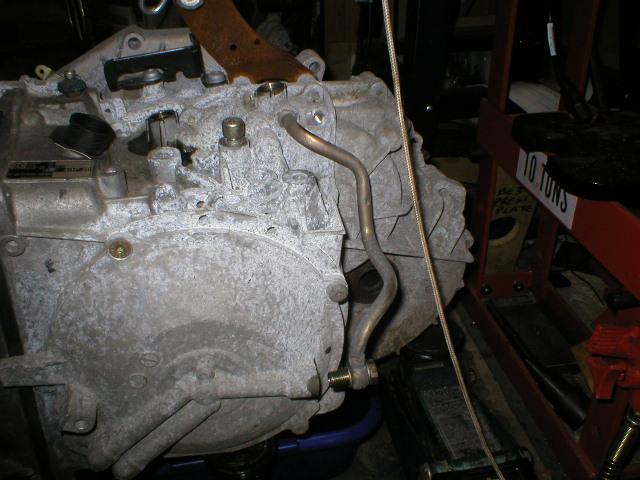
Remove the 10mm bolt and clamp from the top and then undo the banjo on the cover. Remove the pipe noting the O ring on the top end of the pipe. The O ring may remain in the gearbox housing. Do not loose the metal washers either side of the banjo union.
Valve Block Cover
CAUTION, before removing the Valve Block Cover, ensure it and the surrounding area are absolutely spotlessly clean!
The cover is held to the main case by four clamps.
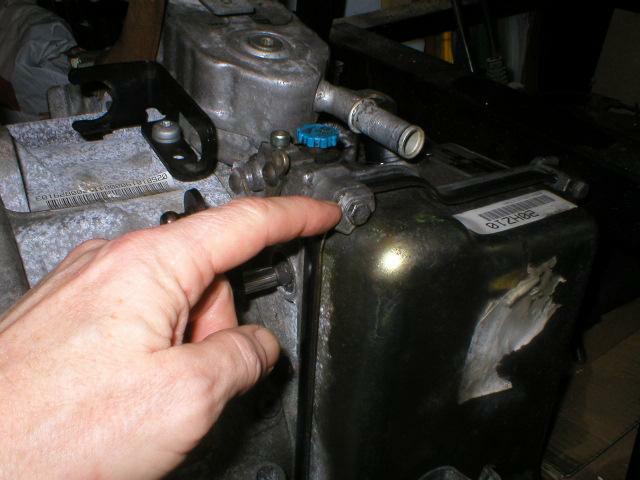
Undo these in turn and remove the cover. Be ready for a spill of oil! You will see the cover has two magnets stuck to it. These are to collect swarf. The cover pictured only has one as the cover took a knock in the accident and one magnet ended up smashed.
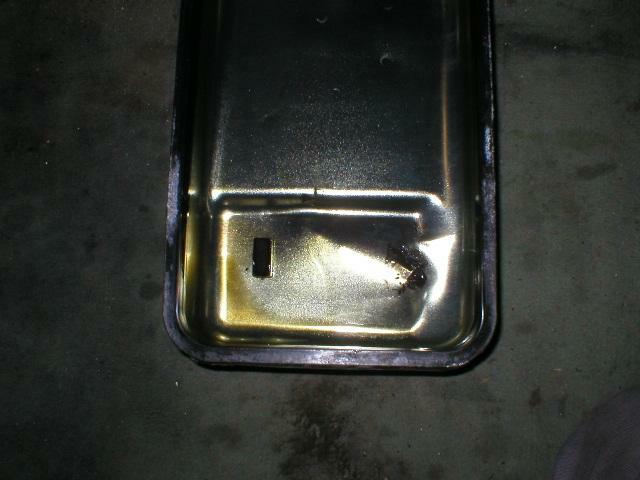
This is the valve block...
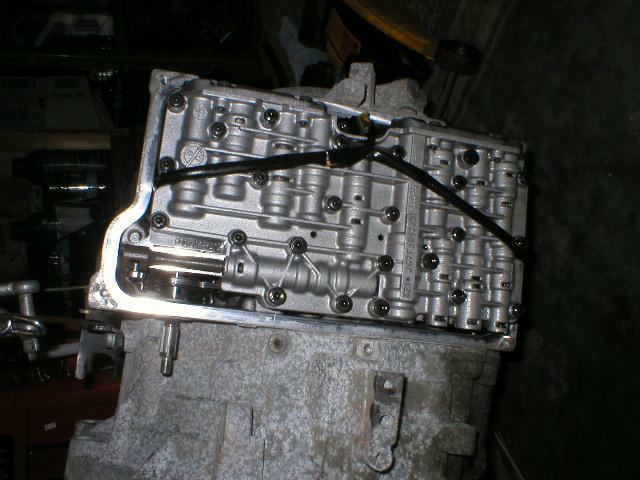
Remove the five T27 Torx screws holding the circular clutch cover. Gently tap around it perhiphery with a small, soft mallet to release it and pull the cover off. Recover a flat bearing and washer from the centre of the housing.
On no account must leverage be used and take every care not to damage the cover or casing mating faces. The cover is sealed via a large O ring.
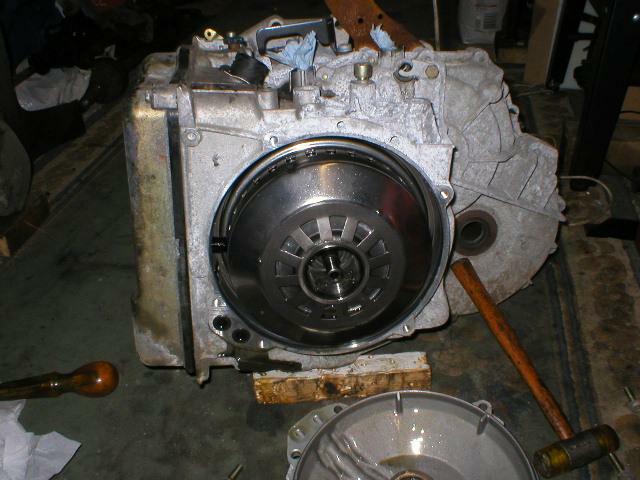
Note the two big O rings for the oil supply down in the bottom left corner. Note, in the view, the valve block cover is still in place.
It is now necessary to remove the Input Speed Sensor as it's presence will foul the front clutch during removal. It can be seen in the picture above as a black rod on the left centre of the clutch drum.
Working from the valve block, locate it and undo its Torx retaining screw and withdraw it.
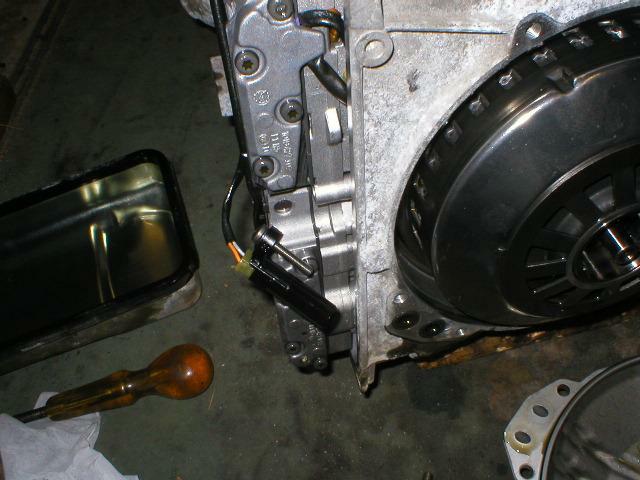
Grasp the clutch drum and gently pull it forward, being prepared to catch the weight of it. The input shaft will come out along with it and it is important the end of this shaft does not get damaged as it has the lock-up clutch oil supply distributor on its end.
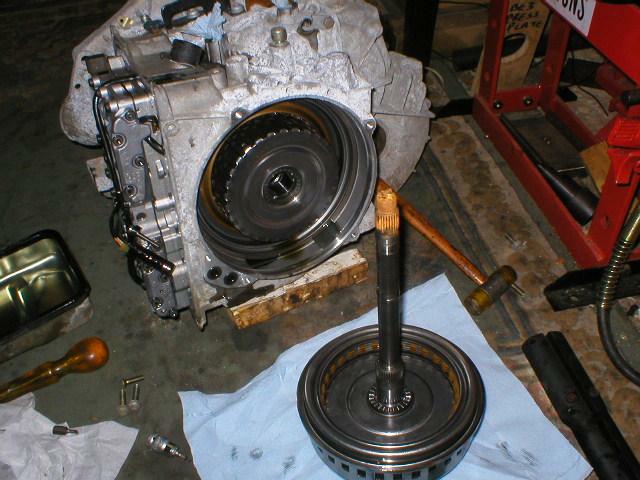
Note the flat bearing on the end of the input shaft at the clutch end. The red stain on the TC end is rust!
The epicyclic gearset is now visible. Grasp it and gently witdraw it, noting it is heavy.
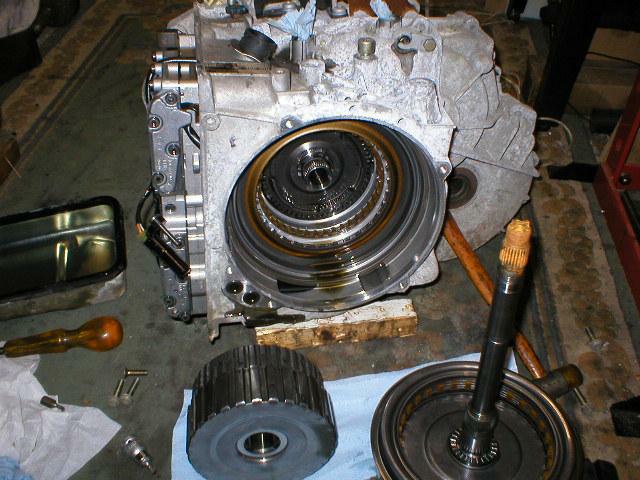
Put these two components to one side. The gearbox is now ready to be split. Splitting makes the gearbox infinitely easier to handle.


